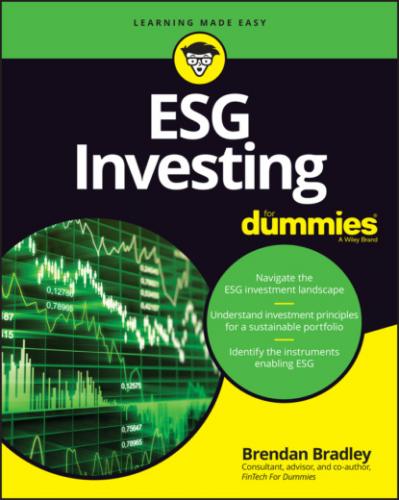https://iris.thegiin.org/about/) is a free, publicly available resource that is managed by the Global Impact Investing Network (GIIN) for measuring, managing, and optimizing impact.
Determining whether ESG delivers good investment performance
ESG integration is consistent with a manager’s fiduciary duty to take into account all relevant information and material risks. It should be remembered that ESG integration isn’t just a negative screen in the investment process that limits one’s investment universe. Therefore, because it includes a more thorough application of traditional financial analysis, it isn’t constrained by reduced diversification and can include companies with poor ESG ratings if they are believed to be “mending their ways.”
Along these lines, nearly all large institutional investors are using ESG data in some capacity. More specifically, the PRI members have pledged to incorporate ESG issues into investment decision-making processes. For example, BlackRock, the world’s largest asset manager, has announced that sustainability, including a company’s ESG performance, will be BlackRock’s new standard for investing. In addition, one of the key reasons that firms undertake ESG analysis is to assess risk. However, such ESG analysis is also a way of uncovering investing opportunities by spotting companies that are improving their ‘E,’ ‘S,’ or ‘G’ profiles before the broader market does.
Understanding ESG’s Impact on the Environment, Society, and Governance
Having left 2020 behind us, with most of us feeling bruised and battered, the poster child continues to be climate change in the environmental corner, but COVID-19 will stay front and center in the social corner for longer than some people think. Meanwhile, heading into 2021 with a questionable Brexit deal for some and the continuing pandemic fallout, supply chain management is holding its own in the middle of the ring for governance (or rather, stewardship). The requirement to make sense of ESG has never been greater; the following sections can help.
Meeting environmental and global warming targets
Many challenges face the environment, but the clear focus is on climate change and the move toward net-zero emissions by 2050. This means that all man-made greenhouse gas (GHG) emissions must decline dramatically (need for decarbonization), and what we can’t stop emitting needs to be removed from the atmosphere through reduction measures. Thus, reducing the Earth’s net climate balance to zero and stabilizing global temperatures is a key goal. While there is an increasing focus on issues such as biodiversity and water management, from an investment point of view, the performance of the energy sector has been relatively poor in recent years, and the COVID-19 pandemic has exacerbated that trend due to lower GDP-related demand and investors continuing to exclude fossil fuel stocks from their portfolios.
While there was an expectation that the pandemic might divert focus away from climate change targets, it seems to have accelerated structural changes in the energy sector, which will present opportunities for policy reform and renewable energy. Meanwhile, new players will participate in the transition to the low-carbon economy because there is now a greater awareness of the risks and opportunities linked to proactively addressing climate issues. Starting in January 2021, with a supportive Democratic government in place in the United States continuing to back a major green deal in Europe to help fund the energy transition, and the COP26 (United Nations Climate Change Conference) taking place in Britain in 2021, the fight against global warming seems to be heating up!
Therefore, on one hand, you have the largest asset manager in the world, BlackRock’s CEO Larry Fink, releasing a statement to other CEOs emphasizing that climate risk is investment risk, and there is a need for consistent and comparable data. On the other hand, there is expectation for a surge in clean energy policies and investment, putting the energy system on track to achieve the sustainable energy objectives in full, including those established in the Paris Agreement. However, the global energy companies’ transition to renewable energy will require a major investment of time and money, so monitoring their ESG credentials in the interim period is necessary. See Chapter 3 for more information on the environmental factor in ESG.
Providing solutions to social challenges
The global COVID-19 pandemic has shone a spotlight on the social aspects of ESG, with social issues rising from third place to first in the list of investors’ ESG priorities in 2020. While the pandemic has obliged some companies to temporarily deprioritize ESG efforts, investors still believe a strong ESG strategy has a positive impact on share price and flexibility. The additional impact of social movements, such as Black Lives Matter and Me Too, has compelled executive boards to incorporate social risks front and center within new standards for corporate governance structures. Human rights, community relations, customer welfare, and employee health, safety, and well-being have all been moved up the prioritization line.
Furthermore, in addition to boardroom diversity, the attention of companies and investors will move toward diversity across companies, from executive management to the overall workforce. Policies on equal pay, equal opportunity, and corporate culture will also come under closer inspection as the idea of corporate social responsibility morphs into the new concept of corporate purpose, with greater emphasis on all stakeholders as well as shareholders.
